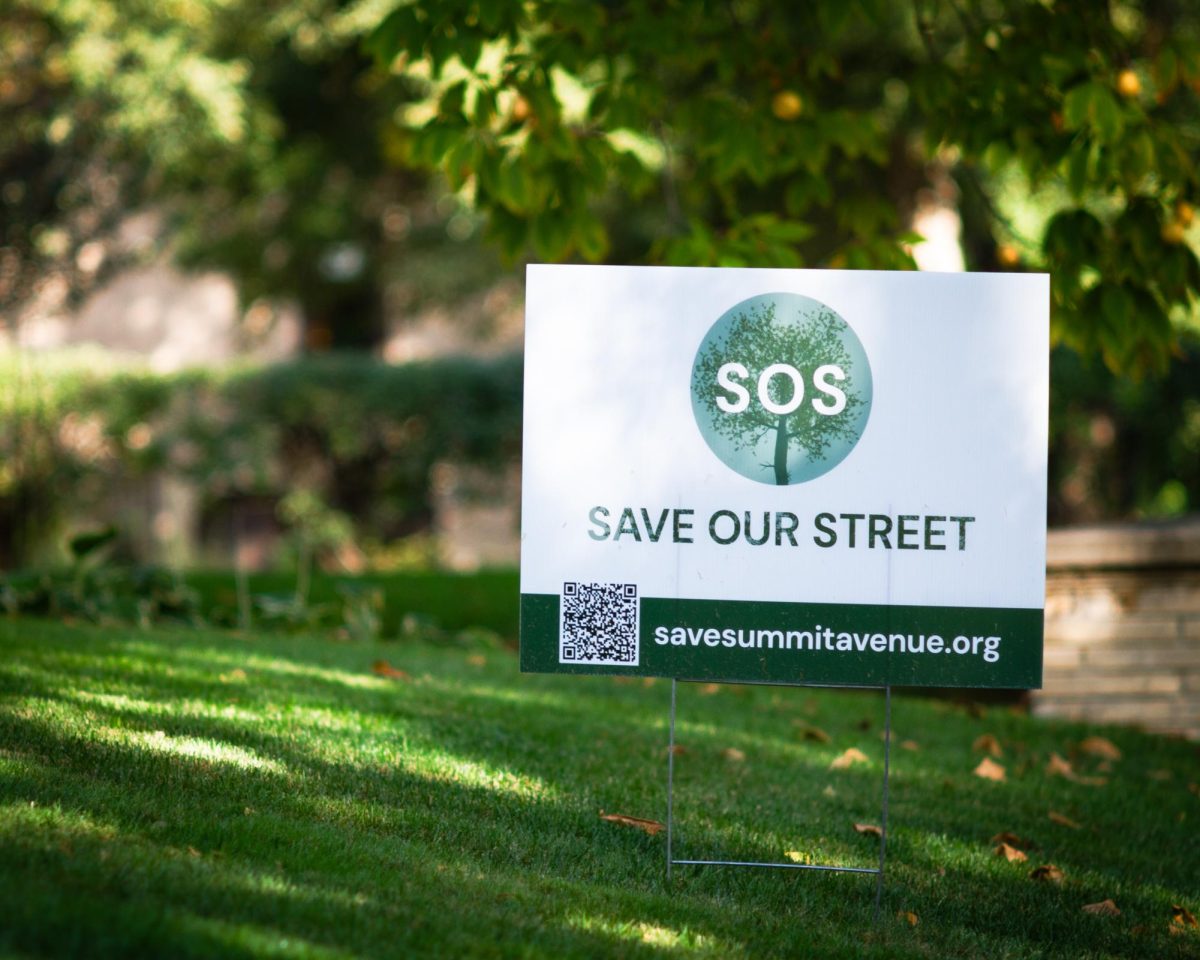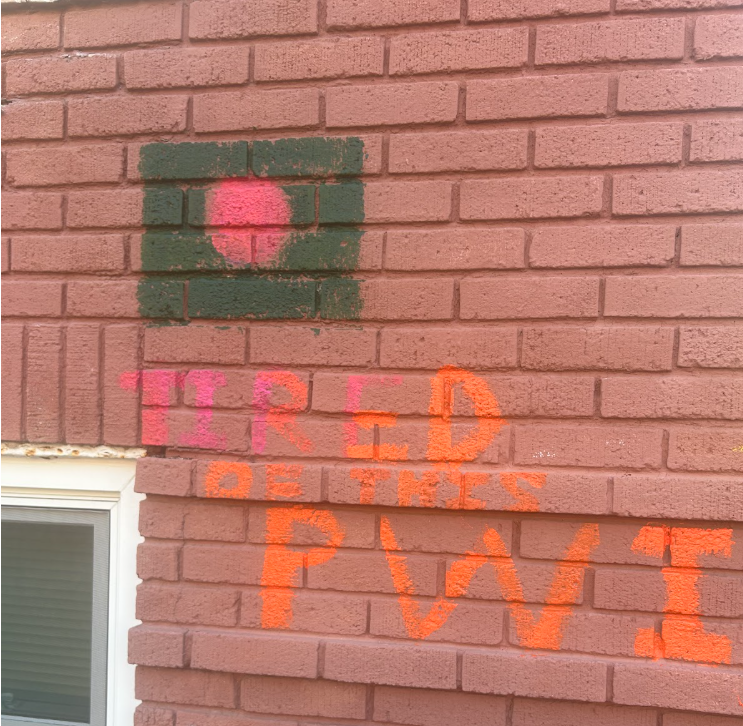If you’ve walked down St. Paul’s Summit Avenue in the past year, you’ve probably noticed the ubiquitous lawn signs: SOS, SAVE OUR STREET. The slogan suggests a virtuous fight, with our Summit Avenue homeowner neighbors protecting a beautiful and historic St. Paul boulevard from something very bad.
In truth, these signs reflect a long, exhausting battle by the residents of Summit Avenue to halt the construction of a protected bike path along the street, which the city has designated as a key corridor in its bike network. It’s the type of battle that plagues cities across our country: long-term residents encounter a local change that they really, really don’t want to happen. In response, they dedicate their considerable time and resources to vociferously fight that change.
Having followed this process over the past year — multiple vicious and hourslong public meetings, a public records lawsuit against the city, a recent public process delay because anti-bike trail advocates have filed for an environmental review — can make one feel pessimistic about the future of our cities.
This chain of events is all too reminiscent of what happened a few years ago at Jefferson Avenue, another bike street just a few blocks south of Macalester’s campus. As Twin Cities geographer Bill Lindeke has documented, a decade ago Jefferson was designated as a “bike boulevard,” to be redesigned as a safe through-street for cyclists. Because bike boulevards don’t use bike lanes or paths (unlike bike routes such as Summit Avenue), the success of bike boulevards relies on a thoughtful street design that slows car traffic in order to prioritize and protect bicycle traffic. One of the proposed design elements was a “diverter median” at the intersection of Jefferson Avenue and the busy Cleveland Avenue, which would slow and reduce car traffic on Jefferson.
Unfortunately, a few residents near the intersection hated this piece of the proposal. Those in opposition organized, public hearings got raucous and anti-boulevard activists filed an arduous public records request demanding many hours of city staff’s time. The diverter was never built. Neither were other proposed traffic circles that could’ve slowed down cars on Jefferson, leaving our local “bike boulevard” looking a lot like any old neighborhood car corridor. Neighbors opposed to change left cyclists to compete with their much heavier, faster and more dangerous vehicular counterparts.
A couple years later, a 21 year-old St. Thomas student suffered a serious brain injury at this exact, relatively infrastructure-less intersection, when he was hit by a car while cycling without a helmet on. Fortunately, he was able to return to school a few months later. It’s impossible to know exactly what would’ve happened on a safer Jefferson Avenue, but it’s a weighty reminder of street design’s real-life impacts.
This brings us back to today’s endless, hyperlocal political scuffle at Summit Avenue. Similar to Jefferson, this is a redesign with meaningful impacts on human safety. The current bike lane, which has no physical barriers between bikes and cars and is rather narrow in some sections, has created problems in the past; in the past 15 years Summit has seen two biker deaths and countless other accidents. It’s frustrating to watch our neighbors reuse an old playbook to combat increased protection for bikers.
But while such a situation could easily make one feel pessimistic about enacting local change, it’s made me feel the opposite. Although there is a strongly organized anti-bike path force, there’s also been a coalition of bikers, environmentalists, and other neighbors (including their young children) standing up in support of the Summit bike trail. While their side may have less yard signs, they’ve gathered momentum where it counts: in May, the St. Paul City Council voted 6-1 in favor of the plan, with both council members and the mayor making strong statements in favor of improved bike infrastructure.
That’s all a testament to the successful efforts of many St. Paulites, both in the past few months and over a longer time span. The Summit Avenue bike trail’s resilience to the opposition of anti-change neighbors didn’t just randomly arise. In part, it’s the result of electing policymakers who champion low-carbon transportation. It’s also the result of long-time efforts by bike advocates to prioritize safety in the public conversation, and effective planning work by city employees to make St. Paul a better place.
So, you ought to read the story of Summit Avenue as an optimistic story. If you follow nationalized media covering global-scale problems, it’s easy to feel pessimistic about our individual ability to influence just about anything. But we do have real agency over things that directly affect our lives.
“We had people banding together as those who care about the same things, and just showing up for stuff,” said Zack Mensinger, a co-chair of the St. Paul Bicycle Coalition. “You’re not always gonna win by doing that, but you won’t win without it.”
You don’t have to be a bike advocate to take a lesson from this story. The same lessons apply to many more issues than local bike safety. Take Macalester, for example, where student efforts have contributed to substantial changes in the past couple of years: on-campus students now have the option to stay in their housing through winter break, and international students will soon be able to use their financial aid packages towards any Macalester-approved study away program. These substantive shifts occurred in large part because students collectively organized to attain them.
None of this is to suggest that making meaningful changes, whether to bike lanes or to college housing, is easy to do — these things take a lot of work, done in tandem with a lot of people. But while meaningful changes are hard to achieve, it’s just as important to remember that they are possible.








